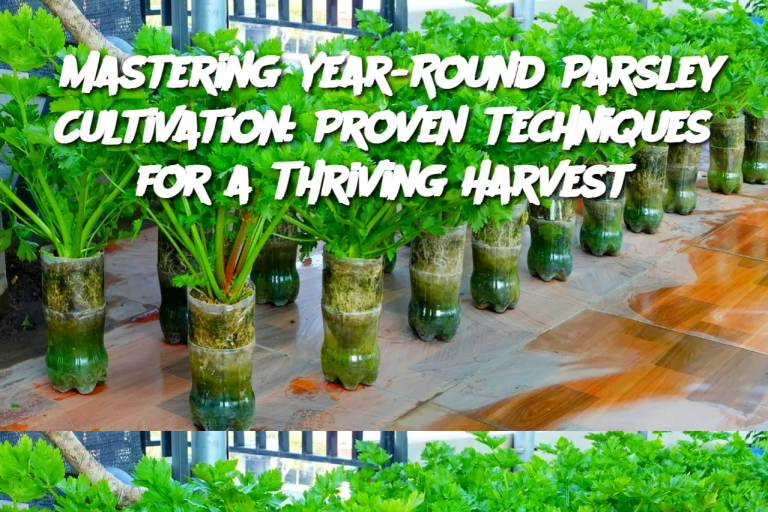ADVERTISEMENT
Introduction
Parsley is a versatile herb that enhances the flavor of countless dishes while offering numerous health benefits. Growing parsley at home year-round ensures a fresh supply for your kitchen, saves money, and allows you to enjoy organic, pesticide-free leaves. Whether you have a spacious garden or a small windowsill, cultivating parsley successfully requires the right techniques. This guide will walk you through the proven methods for growing parsley throughout the year, ensuring a bountiful harvest every season.
Proven Methods for Year-Round Parsley Growth
1. Choosing the Right Parsley Variety
There are two main types of parsley:
Curly Leaf Parsley (Petroselinum crispum var. crispum) – Often used as a garnish, this variety has a mild flavor and decorative leaves.
Flat-Leaf Parsley (Petroselinum crispum var. neapolitanum) – Also known as Italian parsley, it has a stronger flavor and is preferred for cooking.
Both types grow well indoors and outdoors, making them excellent choices for year-round cultivation.
2. Selecting the Best Growing Conditions
Parsley thrives in well-drained, nutrient-rich soil with a pH between 6.0 and 7.0. It requires:
Sunlight: At least 4-6 hours of direct sunlight daily or a grow light for indoor setups.
Temperature: Ideal growth occurs between 50°F and 85°F (10°C–29°C). Protect outdoor plants from frost with mulch or by bringing potted plants inside.
3. Planting Parsley from Seeds or Cuttings
Seed Method: Soak parsley seeds in warm water for 24 hours to improve germination. Plant seeds 1/4 inch deep in moist soil, spaced about 6 inches apart. Germination may take 2-4 weeks.
Cutting Method: Take a 4-inch cutting from an existing plant and place it in water until roots form. Once rooted, transfer it to soil for continuous growth.
4. Watering and Fertilizing for Maximum Growth
Parsley prefers consistently moist but not waterlogged soil. Water when the top inch of soil feels dry. Use a balanced organic fertilizer once a month to encourage lush growth.
5. Pruning and Harvesting for Continuous Yield
Regularly trim outer stems to encourage new growth. Avoid cutting more than one-third of the plant at a time to keep it healthy. Harvesting frequently prevents bolting (going to seed too early).
Ingredients for a Fresh Parsley Recipe
Once you've successfully grown your parsley, put it to use with this simple, flavorful recipe:
Parsley Pesto
Ingredients:
2 cups fresh parsley leaves, packed
1/2 cup grated Parmesan cheese
1/3 cup olive oil
1/4 cup toasted nuts (pine nuts, walnuts, or almonds)
2 cloves garlic
1 tablespoon lemon juice
Salt and pepper to taste
Directions: How to Make Parsley Pesto
Wash and dry the parsley leaves thoroughly.
In a food processor, combine parsley, garlic, nuts, and Parmesan cheese.
Pulse until finely chopped, then slowly drizzle in the olive oil while blending.
Add lemon juice, salt, and pepper, then blend again until smooth.
Taste and adjust seasoning as needed.
Serving and Storage Tips
Serve parsley pesto with pasta, grilled meats, roasted vegetables, or as a sandwich spread.
Store in an airtight container in the refrigerator for up to one week.
To preserve for longer, freeze in ice cube trays and transfer to a sealed bag once solid.
Variations on Parsley Pesto
ADVERTISEMENT
